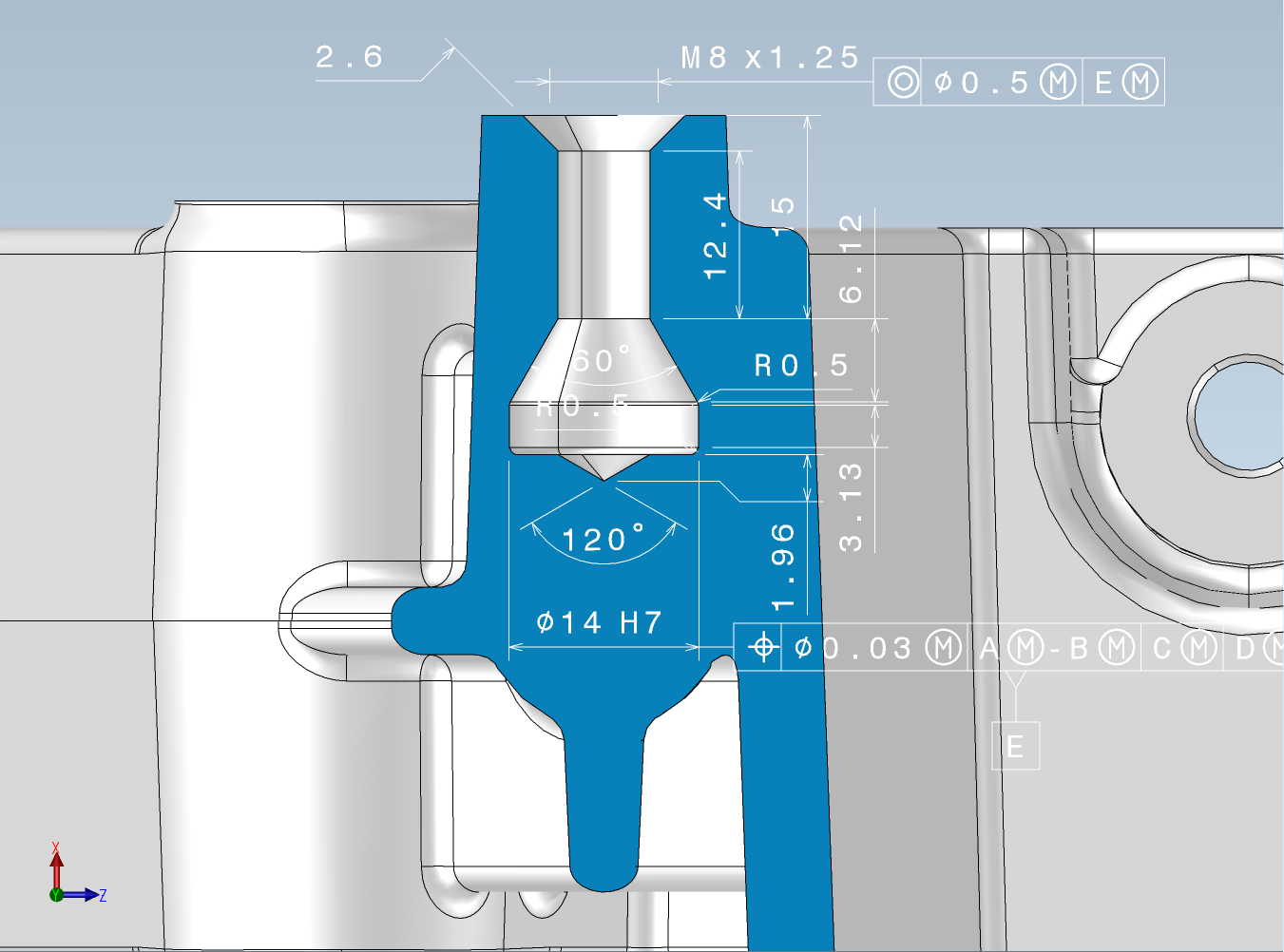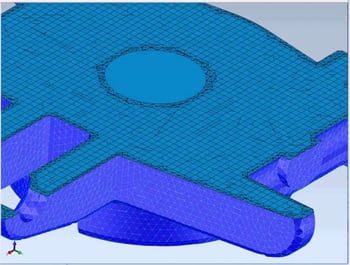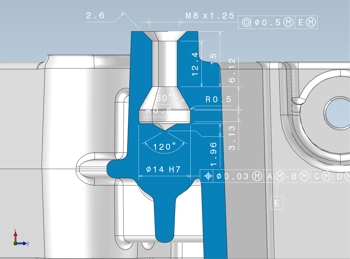It has already been a year since release 2017 1.0, which saw the introduction of a number of innovative features aimed at Innovation and Industrialization. Release 2018.1.0 is no different, building on the innovation of 2017.1.0 by improving the end-user experience, enabling new and evolved industry workflows and enabling faster time to market.
CGM Core Modeler
For the CGM Core Modeler, this release focuses on three major categories:
• Streamlining additive manufacturing workflows
• Improving support of simulation and analysis solutions
• Increasing the ease of developing analysis applications
To achieve these goals, CGM now delivers hybrid modeling capabilities through seamless integration with CGM Polyhedra. Developers instantly have access to unified set of modeling operations for precise and faceted models and tools necessary for accurate model repair.
Simulation and analysis workflows are improved with this release via the new CGM Defeaturing add-on product for automated model simplification. Advanced defeaturing capabilities reduce the amount of data in a model, allowing for a dramatic improvement in simulation and analysis efficiency.
Support for analysis workflows has also been extended via the advanced, robust surface and volume meshing capabilities delivered by 3D Precise Mesh integrated with CGM. See the recent blog post. Improving CAD to Solver Process with 3D Precise Mesh.
3D ACIS Modeler
Release 2018 1.0 focused on improving robustness as well as improving some of the core modeling functions such as Boolean and Remove Faces operators. The ability to remove faces is important to many workflows, ranging from simplification for analysis to direct modeling. Extending these algorithms makes these workflows easier and more powerful. The Remove Faces capability in the 3D ACIS Modeler can now solve several new classes of geometry arrangements.
As one of the most-important operators used in 3D modeling, Boolean performance and reliability is critical to application developers who are creating industry-leading software. The strengthened Boolean operators available in this release now address some of the most challenging use cases put to ACIS across industries over its many years of solving these challenges.
CGM Polyhedra
CGM Polyhedra also sees enhancements with this new release, democratizing hybrid modeling capabilities by integrating with the CGM Core Modeler, allowing users to easily incorporate polygonal and precise modeling capabilities into their applications. This release also enhances the integration with 3D ACIS Modeler, enabling more operations on hybrid bodies, such as Hybrid Stitch (which allows users to directly combine precise and polygonal faces into one body) and Hybrid Move (which allows users to manipulate precise faces in a hybrid body). These integrations drive the ease of use that independent software vendors (ISVs) use to get to market faster and better than their competition.
When dealing with polygonal data, end users may find that some models or parts contain a higher level of detail than the workflow requires, which can explode downstream workflow processing time while also increasing file sizes. Because of the importance of addressing these needs with judicious power, this release delivers an update to the Decimation Operator in CGM Polyhedra. The enhanced capability provides new options for user-friendly configuration and operation that application developers can configure directly or expose to end users as appropriate to optimize their decimation workflows.
3D InterOp
3D InterOp is the industry standard for data reuse, providing critical data to 3D engineering workflows. This release sees additional capabilities and market-driven enhancements across engineering disciplines, improving the integration of engineering processes and the breadth of data interoperability.
Model based definition (MBD) incorporates critical manufacturing information into the 3D model so that digital design and manufacturing can yield improved results in less time. Specific enhancements have been done for translation of accurate model views and captures so that manufacturing and measurement applications can effectively implement process automation to their MBD Workflows.
Persistent naming (PNAME) provides a mechanism for applications to identify what has changed when reimporting a CAD file after it has been modified externally. This capability is fully supported for all CAD formats. Interop now supports accurate, permanent topological identifiers for both parts & assemblies allowing Multi-CAD design and CAE applications to create and optimize simulation driven design workflows. Because of the PNAME capability, these workflows will benefit from reduced manual update time during iterative design processes.
New, Updated and Extended File Format Interoperability
New file formats continue extending the data reuse capabilities to additional workflows, datasets and industries, ensuring that 3D InterOp users can access and share the 3D models and data that are required. In this release, we have added support for 3MF (3D Manufacturing Format) which is designed for Additive Manufacturing workflows and allows specification of materials, colors and other information required for 3D printing software applications. Other new file formats include MicroStation DGN, and SOLIDWORKS and CATIA V5 drawing readers for viewing CAD drawings.
Extended file formats include NX, where full support for NX Model Views provides the same logical groups as the originating system. NX support has also been enhanced to provide Capture Information.
To provide the latest interoperability across systems and industries, this release brings a dozen updates to the latest versions of the major CAD formats, such as Creo 4.0, JT 10 and AutoCAD 2017, assuring that your users can read and write data between varying systems and versions as end users expect. For a complete list of supported formats and versions, please view this page.
Release 2018 1.0 is Here!
Download it now or speak to a Spatial representative to drive your software application forward.





















